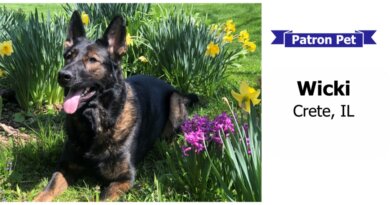AAFCO Meeting January 2023 Report – Truth about Pet Food
[ad_1]
Unlike any other AAFCO meeting, this year I was greeted by smiles and handshakes from several AAFCO members. (Of course there was still glares of ‘why are you still here’ from many others.) The new President – Eric Brady of Tennessee Department of Agriculture – made a tremendous effort to introduce himself to me (but I already knew who he was) and assured me that under his watch as AAFCO President efforts will be made to do things differently than they have done in the past. I greatly appreciated his words, and time will tell if he can make changes in the AAFCO ‘good ol’ boys’ club.
In recent years, AAFCO has added a Keynote Speaker to each meeting. At this meeting the Keynote Speaker was Mr. Ray Starling, an attorney and agriculture marketing executive from Aimpoint Research. The agenda indicated his speech would be 45 minutes…I could only take listening to him for 10 minutes. During those ten minutes he mocked scientists and researchers that made claims of a broken food system in the US, preaching to the mainly pro-Big-Agriculture audience the US food system is not broken, it’s amazing. After 10 minutes, I couldn’t take it any longer and I left the room.
In the Ingredient Definitions Committee session, AAFCO approved a definition of “Finished Feed” to clarify the difference between a ‘Complete Feed’ and a ‘Finished Feed’. Below is a picture of the information provided at the meeting (picture of the slide presented):

As you can see by the definitions provided, pet food would be classified as a ‘Complete Feed’ (even though it is labeled as a food – dog food, cat food). And unfortunately, please notice that a ‘Complete Feed’ is defined as only “nutritionally adequate“.
The same AAFCO Committee approved a definition of Freeze Dried:

The Committee updated a definition of ‘Recovered Food’ to include a new ingredient for livestock feed – Recovered Household Food. Apparently there is a new business that will provide households with containers that will grind and store household food waste. I assume similar to a recycling program, the company will pick up the stored household food waste from participating homes and further process the recovered household food (garbage) into livestock feed ingredients. This is no joke, this is actually happening. No one addressed issues of concern with household food waste becoming livestock feed ingredients – such as risks of what could be tossed into the household bin (expired drugs as an example). And no one explained what nutrition the household food waste is providing livestock. But AAFCO did approve the ingredient.
Below is the definition, which is also used for Recovered Restaurant Food (the blank line in the ingredient name is a fill in the blank…name your recovered food):

And during the Ingredient Definitions Committee session we learned that AAFCO is not updating animal protein ingredients in a way that provides pet owners an understanding of what is in their pet’s food. In 2019, we submitted a full list of proposed updates to all of the animal protein ingredients used in pet food. (Click Here to read our 2019 proposed definitions.)
Instead of updating ingredient definitions to provide pet owners with some valuable information, AAFCO ignored everything we submitted. AAFCO did not allow us to participate in the Working Group that updated the definitions, and denied us any opportunity to provide input during the four years since we submitted the proposed definitions. During the meeting, I asked the AAFCO Working Group Chair – Stan Cook of Missouri Department of Agriculture – if any of the updated definitions will provide pet owners with the needed information we requested…he said no.
Here is one example ‘updated’ definition the Committee shared:

During the Pet Food Committee session was the discussion of finally establishing a copper maximum in pet food. Sadly, AAFCO does NOT seem interested in doing this. Industry made shocking statements during this discussion, blaming the increase in Copper Storage Disease diagnosis’s in dogs on the animal being ill (not on the fact that any amount of copper can be added to pet food and that could be the cause of the pet’s illness). The trade association AFIA which represents many in Big Pet Feed stated that copper concerns in pet food are “unwarranted”. The Committee members repeated numerous times that they could not determine a maximum level.
Dr. Dave Dzanis, on behalf of the American College of Veterinary Nutrition – who was not in attendance but spoke via the live webinar – told the Committee that copper issues in dogs is on the rise and it is a concerning trend. He urged AAFCO to take some action limiting copper in pet food, or at the very least to approve a standard for a low copper dog food.
I went to the microphone and shared with the Pet Food Committee two things…I shared that European Pet Food regulations have legally established a maximum copper level in pet food since 2014. I asked the Committee if Europe can do it, why can’t AAFCO? I was told by FDA that Europe’s maximum copper level for pet foods was “established for environmental concerns, not animal concerns“. I find that hard to believe (and will investigate this issue further).
I also asked the Pet Food Committee if they intend to ask Pet Owners if they want a maximum copper level in pet foods established. I reminded the committee that Pet Owners are the largest stakeholder of pet food, and they should have a voice in this decision. I did not receive a response to this question.
At this point, we do not know if AAFCO will do anything about limiting copper in pet food, or if they will establish a standard for a low copper dog food. I can share it doesn’t look promising.
And the Pet Food Committee session also discussed their years (since 2015) of work to finally update pet food labels. AAFCO has fully approved label updates, but it will still take years for pet owners to begin to see changes.
And we were happy to see that AAFCO Model Bills Committee approved a new definition for labeling:
“The term ‘labeling’ means all labels and other written or graphic materials in print or electronic form that are published or disseminated by a guarantor or distributor (1) upon a commercial feed or any of its containers or wrappers, or (2) accompanying or promoting such commercial feed.”
The trade association representing many in Big Pet Feed (AFIA) argued (and argued) against this definition being approved. I told the Committee that this definition – that would finally legally make a pet food manufacturers website to be held to the same regulations as the label was needed. Sharing that pet owners are often lied to in marketing materials – told very different information than what the label states. We were pleased that AAFCO approved this definition despite AFIA’s complaints.
The next AAFCO meeting will take place in early August in Baltimore, Maryland.
Wishing you and your pet(s) the best,
Susan Thixton
Pet Food Safety Advocate
Author Buyer Beware, Co-Author Dinner PAWsible
TruthaboutPetFood.com
Association for Truth in Pet Food

Become a member of our pet food consumer Association. Association for Truth in Pet Food is a a stakeholder organization representing the voice of pet food consumers at AAFCO and with FDA. Your membership helps representatives attend meetings and voice consumer concerns with regulatory authorities. Click Here to learn more.
What’s in Your Pet’s Food?
Is your dog or cat eating risk ingredients? Chinese imports? Petsumer Report tells the ‘rest of the story’ on over 5,000 cat foods, dog foods, and pet treats. 30 Day Satisfaction Guarantee. Click Here to preview Petsumer Report. www.PetsumerReport.com
Find Healthy Pet Foods in Your Area Click Here

The 2023 List
Susan’s List of trusted pet foods. Click Here to learn more.
[ad_2]
Source link




